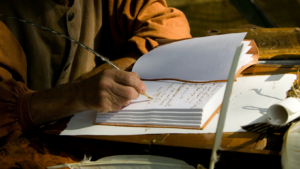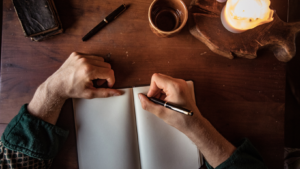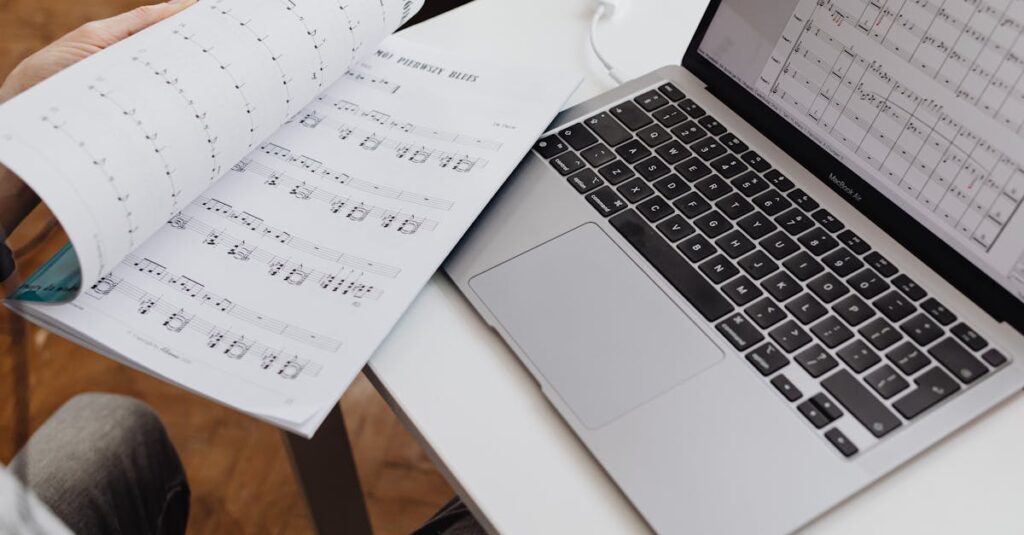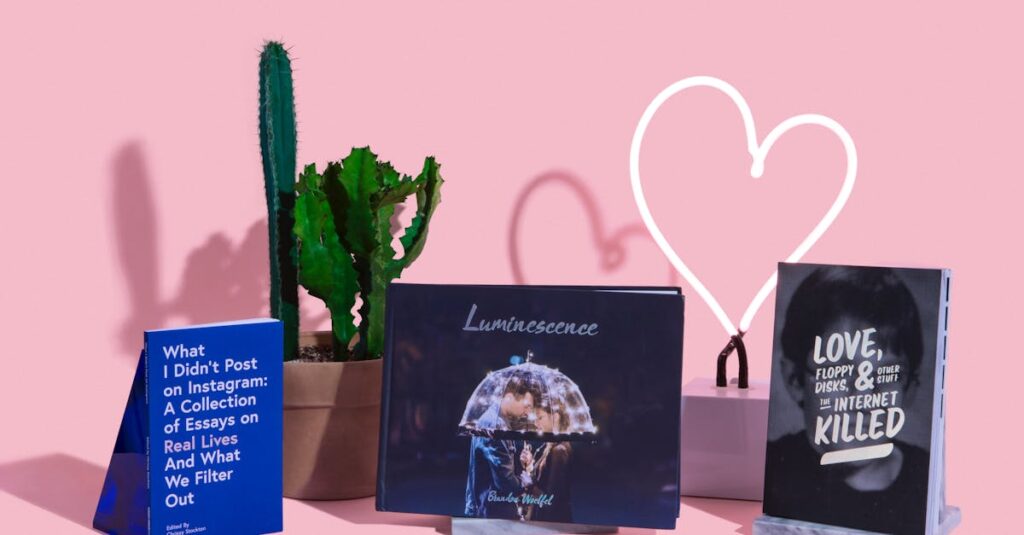As a creative professional, I’ve spent years exploring the complex relationship between art and ownership. The concept that anyone can truly “”own”” creative works has always fascinated me, especially in today’s digital age where content flows freely across borders and platforms.
I’ve watched countless artists struggle with the idea of intellectual property rights while witnessing how creative works naturally build upon previous innovations. When I examine great masterpieces throughout history, it’s clear they’ve all been influenced by earlier works. The truth is, creativity doesn’t exist in a vacuum – it’s a continuous flow of ideas, inspirations, and interpretations that shape our cultural landscape.
You Can Not Own the Rights to Music, Art, Writing, or Other Creative Endeavors.
- Creative works cannot be truly “”owned”” as they build upon previous innovations and exist within a continuous flow of ideas and inspirations
- Intellectual property rights provide temporary legal protection while acknowledging creativity’s collaborative nature through mechanisms like fair use and Creative Commons licensing
- The public domain plays a crucial role in preserving cultural heritage by making creative works freely accessible once copyright protection expires
- Digital technology and the internet have fundamentally transformed how creative content is distributed, shared, and monetized, challenging traditional ownership concepts
- Alternative revenue streams like direct fan support, live events, workshops, and licensing help creators earn income without relying solely on copyright protection
Understanding Intellectual Property Rights
Intellectual property rights establish legal frameworks for protecting creative works while acknowledging the complex nature of artistic ownership. I’ve examined how these rights evolved from historical concepts to modern legal structures.
Historical Context of Creative Ownership
The concept of creative ownership emerged in 15th century Venice through the first patent system. During the Renaissance period (1300-1600), artists operated under patronage systems where wealthy benefactors controlled artistic outputs. Here’s how creative ownership evolved:
- Guild systems protected trade secrets through strict membership rules
- Royal privileges granted exclusive printing rights in medieval Europe
- The Statute of Anne (1710) established the first copyright law
- Early copyright duration lasted 14 years with one renewal option
- Patent systems expanded from Venice to England France & Germany by 1700
- Digital Millennium Copyright Act (DMCA) addresses online content protection
- Fair Use doctrine allows limited use without permission for education research criticism
- Creative Commons licenses offer flexible sharing options
- International copyright treaties protect works across 179 countries
- Copyright duration extends to creator’s life plus 70 years
| Type of Work | Protection Period | Registration Required |
|---|---|---|
| Literary | Life + 70 years | No |
| Musical | Life + 70 years | No |
| Visual Art | Life + 70 years | No |
| Patents | 20 years | Yes |
| Trademarks | Renewable 10 years | Yes |
The Public Domain Argument
Public domain represents the collective cultural commons where creative works exist free from copyright restrictions, accessible to everyone for use modification.
Creative Works as Cultural Heritage

Cultural heritage thrives on the unrestricted flow of creative expression across generations. Works in the public domain, like Shakespeare’s plays Mozart’s compositions Bach’s fugues, form the foundation of our shared artistic legacy. The UNESCO World Heritage Convention recognizes these creative works as integral components of humanity’s cultural inheritance, protecting them for future generations.
| Public Domain Milestones | Year Entered Public Domain |
|---|---|
| Brothers Grimm Tales | 1893 |
| Classical Music pre-1923 | 1923 |
| Early Silent Films | 1923-1929 |
| Mickey Mouse (Steamboat Willie) | 2024 |
Shared Knowledge and Inspiration
Creative innovation emerges from the continuous exchange of ideas across artistic communities. Artists draw inspiration from:
- Studying classical techniques displayed in Renaissance paintings
- Remixing traditional folk melodies into contemporary compositions
- Adapting ancient mythology into modern storytelling formats
- Building upon established artistic movements like Impressionism Cubism
- Incorporating historical architectural elements into new designs
- Eliminating barriers to accessing foundational works
- Enabling experimentation with established artistic elements
- Supporting educational initiatives through unrestricted material use
- Preserving cultural traditions through continued adaptation
- Fostering innovation through unlimited creative reinterpretation
Limitations of Creative Rights
Creative rights operate within specific boundaries that balance protection with public access. These limitations ensure the preservation of cultural exchange while maintaining incentives for creators.
Fair Use and Creative Commons
Fair use doctrine permits limited use of copyrighted material without permission for purposes such as criticism, commentary, news reporting, teaching, scholarship or research. Creative Commons licenses expand these freedoms by offering creators standardized ways to grant permissions:
- Attribution (BY) requires credit to the original creator
- ShareAlike (SA) mandates sharing modified works under identical terms
- NonCommercial (NC) restricts commercial use of the work
- NoDerivatives (ND) prohibits modifications to the original work
Time-Limited Protection
Copyright protection expires after specific time periods, varying by jurisdiction and type of work:
| Region | Copyright Duration | Post-Death Duration |
|---|---|---|
| US | Life of creator | +70 years |
| EU | Life of creator | +70 years |
| Canada | Life of creator | +50 years |
| Mexico | Life of creator | +100 years |
- Free reproduction of expired works
- Creation of derivative works without permission
- Distribution across digital platforms
- Integration into educational materials
- Commercial use without royalty payments
The Digital Age Challenge
Digital technologies transformed how creative works spread, making traditional ownership concepts increasingly complex. The internet’s global reach altered distribution patterns dramatically, challenging conventional copyright frameworks.
Internet Distribution and Control
Digital distribution platforms created unprecedented accessibility to creative content through streaming services, social media platforms, peer-to-peer networks. Content sharing occurs at exponential rates:
| Platform Type | Daily Content Shared (2023) |
|---|---|
| YouTube | 720,000 hours of video |
| 95 million photos | |
| SoundCloud | 12 hours of audio per minute |
Controlling content distribution faces technical hurdles:
- Digital files duplicate instantly without quality loss
- Geographic boundaries blur in cyberspace
- Content appears on multiple platforms simultaneously
- DRM systems face continuous circumvention
- Anonymous sharing complicates enforcement
Remix Culture and Derivative Works
Digital tools democratized content creation, spawning remix culture where existing works transform into new expressions:
- Mash-ups combine multiple songs into original compositions
- Digital art incorporates elements from various sources
- Video remixes repurpose footage for commentary
- Memes adapt images for cultural commentary
- Fan fiction expands original narratives
Key platforms enabling remix culture:
| Platform | Primary Use Case |
|---|---|
| TikTok | Short-form video remixes |
| Soundcloud | Music remixes & mashups |
| DeviantArt | Digital art modifications |
| Archive of Our Own | Fan fiction hosting |
| YouTube | Video remixes & parodies |
This democratization of creative tools challenges traditional ownership models as derivative works multiply exponentially across digital spaces.
Economic Impact of Creative Rights
The economic landscape for creative works extends beyond traditional ownership models, revealing diverse revenue generation methods in the digital age. These economic structures reflect the evolving relationship between creators their work.
Artist Compensation Models
Direct support platforms transform how creators receive compensation for their work. Patreon enables recurring monthly payments from fans starting at $1 while Ko-fi facilitates one-time donations. Streaming services like Spotify pay artists $0.003-$0.005 per stream based on complex algorithms tracking listener engagement. NFT marketplaces OpenSea SuperRare generate revenue through digital scarcity with unique tokens selling for amounts ranging from $100 to $69 million.
| Platform Type | Average Revenue per Transaction | Engagement Rate |
|---|---|---|
| Patreon | $5-12 monthly | 2-5% of followers |
| Ko-fi | $3-15 one-time | 1-3% of audience |
| Spotify | $0.003-0.005 per stream | 30% monthly active |
| NFT Sales | $500-50,000 per piece | 0.1-1% collector rate |
Alternative Revenue Streams
Creative professionals leverage multiple income sources beyond direct content sales. Live performances generate 50-70% of musician income through ticket sales merchandise. Workshop facilitation produces $200-2000 per session for visual artists writers. Licensing deals with brands yield $5000-50000 for artwork usage in marketing campaigns. Teaching opportunities provide steady income streams with online courses earning $20-200 per student enrollment.
| Revenue Stream | Annual Potential | Market Growth Rate |
|---|---|---|
| Live Events | $30K-300K | 15% YoY |
| Workshops | $10K-100K | 25% YoY |
| Licensing | $20K-200K | 20% YoY |
| Online Courses | $15K-150K | 35% YoY |
Cultural and Social Implications
The inability to fully own creative works shapes cultural development through unrestricted sharing of artistic expression. This dynamic exchange fosters a rich tapestry of shared experiences across communities.
Access to Art and Knowledge

Digital platforms democratize access to creative works, enabling broader cultural participation. Museums digitize their collections, making masterpieces viewable to anyone with internet access. Educational institutions share research papers through open-access journals like JSTOR, reaching 10+ million monthly users. Libraries implement digital lending systems that circulate e-books 500 million times annually, expanding knowledge accessibility beyond physical limitations.
Innovation and Creative Freedom
Creative freedom flourishes when artists build upon existing works without restrictive ownership barriers. Remix artists transform songs into new compositions, generating 4+ million remixes on platforms like SoundCloud. Digital artists modify classical paintings to create contemporary interpretations, with DeviantArt hosting 370+ million artworks. Writers craft transformative works through platforms like Archive of Our Own, which features 8+ million stories across 40,000 fandoms.
| Platform | Content Type | Monthly Active Users | Content Volume |
|---|---|---|---|
| JSTOR | Academic Papers | 10+ million | 12+ million articles |
| SoundCloud | Music Remixes | 76+ million | 4+ million remixes |
| DeviantArt | Digital Art | 45+ million | 370+ million artworks |
| Archive of Our Own | Written Works | 4+ million | 8+ million stories |
More Fluid Understanding of Rights and Permissions
The concept of creative ownership continues to evolve as we navigate the digital landscape. I’ve seen how the traditional notion of owning creative works has transformed into a more fluid understanding of rights and permissions.
The future of creative expression lies not in strict ownership but in finding innovative ways to support artists while fostering an open exchange of ideas. I believe that embracing this reality will lead to richer cultural experiences and more sustainable creative ecosystems.
As we move forward digital platforms collaborative communities and alternative revenue models will shape how we interact with creative works. It’s clear that the true value of art lies not in its ownership but in its ability to inspire connect and transform our world.



